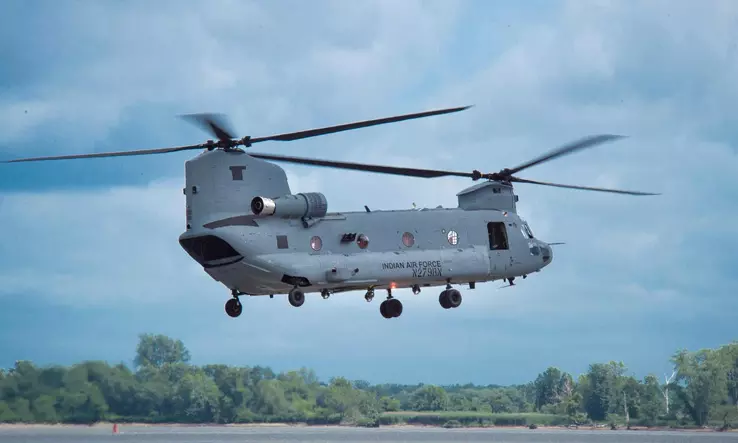IAF Chinook, MI17 used to save Kedarnath pilgrims
By : Prithviraj Singh
Update: 2024-08-02 18:50 GMT

Dehradun: The Uttarakhand government on Friday deployed Chinook and MI17 helicopters of the Indian Air Force to rescue approximately 1,450 tourists stranded at four locations on the Kedarnath route over the past two days. A landslide two days ago caused a 70-metre road section near the Bhimbali police post to break, completely blocking road connectivity to the Kedarnath Shrine.
The State Emergency Operation Center (SEOC) and State Disaster Response Force (SDRF) reported that nearly 3,500 stranded pilgrims had been rescued since Wednesday night. Heavy rains triggered landslides and a cloudburst at Lincholi, cutting off the Kedar Valley from the rest of the region. Around 5,000 Kedarnath pilgrims and locals were stranded due to the rain disaster.
A total of 714 pilgrims were airlifted from the Kedarnath Shrine area, Lincholi, Bhimbali, and Chidbasa to safer locations at Sonprayag and other places. According to an SEOC statement, about 800 devotees were stranded at Kedarnath, 300 in Bhimbali, 200 in Chidbasa, and 150 in Lincholi. Officials from the state disaster management department confirmed that two Indian Air Force helicopters, a Chinook and an MI17, were deployed for the rescue operations, airlifting 714 pilgrims to safer locations by the afternoon. The rescue operation faced intermittent bad weather in the
Kedarnath valley, but efforts continued to relocate the stranded pilgrims.
Teams from the National Disaster Relief Fund (NDRF), SDRF, and District Disaster Relief Fund (DDRF) were stationed at all locations where pilgrims were stranded. The district administration provided adequate food and lodging facilities for the pilgrims.
Teams from the National Disaster Relief Fund (NDRF), SDRF, and District Disaster Relief Fund (DDRF) were stationed at all locations where pilgrims were stranded. The district administration provided adequate food and lodging facilities for the pilgrims.
Meanwhile, SDRF employed drones to locate and identify alternate routes to rescue and move pilgrims to safety. The state's principal disaster rescue and rehabilitation body reported that 3,500 pilgrims had been rescued via alternate rope-routes created by the SDRF teams.


